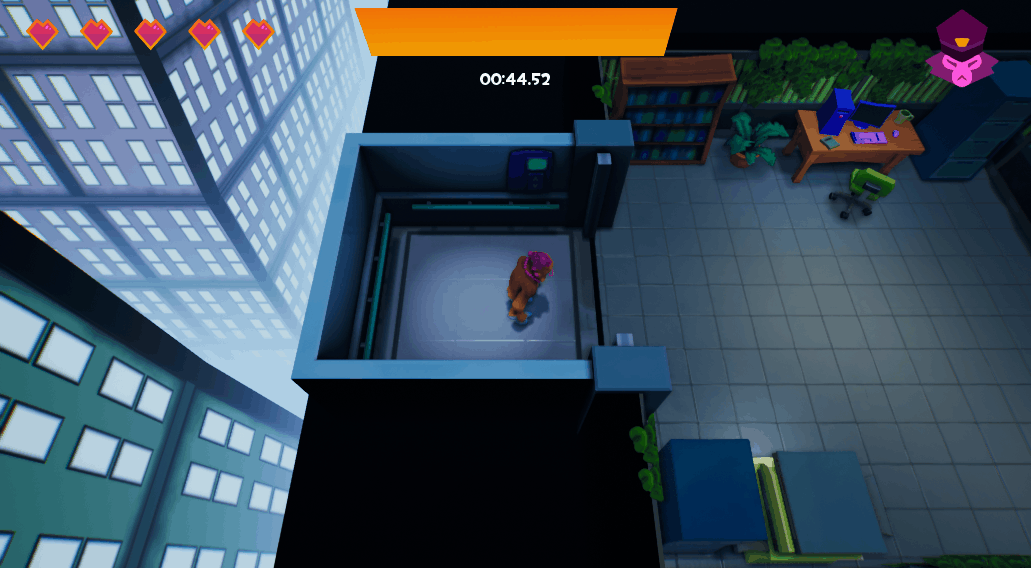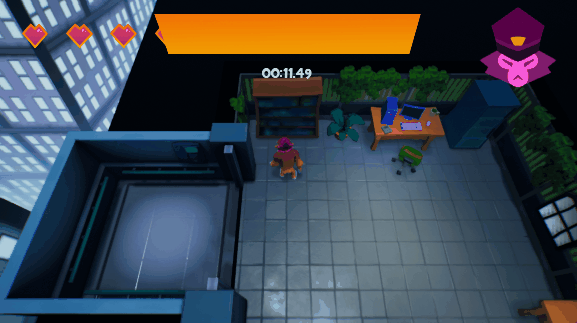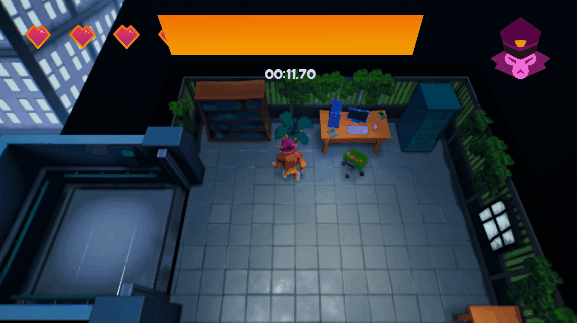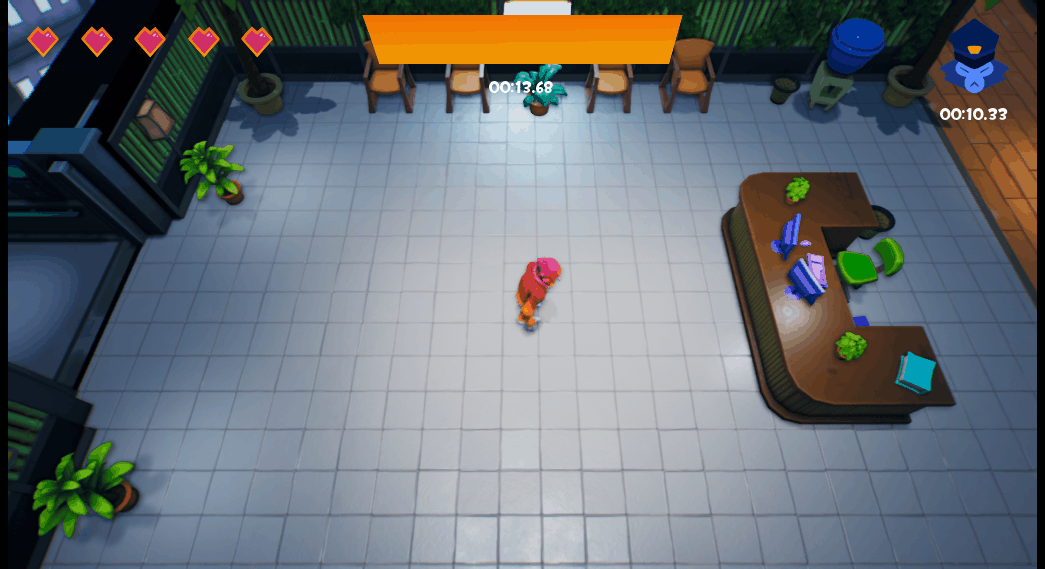No More
Monkey Business
Genre
Chaos Creation
Development Role
Level Designer
Development Time
7 Weeks
Team Size
13
Tools
Unreal Engine 4, Perforce, Krita
Game Concept
Control a monkey on a rampage to destroy an office building
Your objective is to destroy each floor of the company. This is achieved by destroying X amount of objects in each floor. Once the requiered amount is reached, the player can progress to the next floor.
To achieve this the player can punch, perform a body slam and throw small objects. Also, the player must avoid the darts thrown by the Monkey Police.
Brief Gameplay Explanation
Level Design
Drew the Top-Down Level Sketches
Implemented the Level Block-out
Iterated on levels based on team feedback
Designed the Level to Level Progression
Gave Feedback to the Art Team about the art pass
Added the Final Game Assets
My Contributions
Design Pillars
Chaos
Strong Feedback
Whimsical
My Level Design Principles
for this Game
Giving the player enough space
The game-feel of this game was chaos and freedom, thus giving the player space to move freely and make mistakes was important.
Guiding the Player
I used the objects and the color of the floor and walls to guide the player to the routes I found to be most interesting
Telling stories
I made sure to create background stories for each level and also between levels. This facilitated the process of defining what happens in each level and room. Also, having this ensured the levels were different between them and memorable.
Take advantage of the camera
I used the fixed camera angle to foreshadow and hide different elements. I did this by organizing the level in a way the player had to pass through paths subtly implied this information.
My Level Progression
Philosophy
Introduce few mechanics per level
Introduce core and foundational mechanics first
Use the knowledge of the previous levels in the current one
Increase difficulty with each new level
Make each level layout different
Use the last level as a “final exam” of the knowledge learned
I defined everything the player needed to know and divided the content through the level
I proceeded to draw the level sketches to get the general layout
I made the level blockout
I iterated this step as much as I needed
First Iteration
Objectives:
Introduce player to all destructible objects
Introduce the player to objects blocking pathways
Strongly Interconnected Level
Have objects within the reach of the camera to guide the player
Conclusions:
Hallways and some rooms are too small, restricting the player’s movement
Feels too short
Object placement is good
The objects sizes are good, they just need more space
The level lacks focus
Second Iteration
Objectives:
Introduce player to all destructible objects
Strongly Interconnected Level
Have objects always within the reach of the camera to guide the player
Give the player more space to move
Conclusions:
Rooms and hallways are still too small
The size of the level felt more appropriate
It isn’t clear what is the story behind this level
Third Iteration
Objectives:
Introduce player to all destructible objects
Strongly Interconnected Level
Have objects always within the reach of the camera to guide the player
Give the player more space to move
Conclusions:
Rooms give the player enough space to move and play
Level size is good
The suggested path is good
The long room could be made a bit shorter but that can be done with a quick fix
To showcase my work pipeline, here I share the iteration process of the 1st level:
Planning and Blockout Process
Lessons Learned
Things to do Better
Use a camera that can’t be controlled to foreshadow information and guide the player
How to create materials that ease the level design process
A more clear blocking system that can easily be understood by the artist
Communicate more clearly with the artist to ensure the assets I get work for all the situations I planned
Ask to have the basic movement and core mechanics ready before working on levels
Be more proactive in defining aspects that affect the level design like enemy placement and AI behavior













